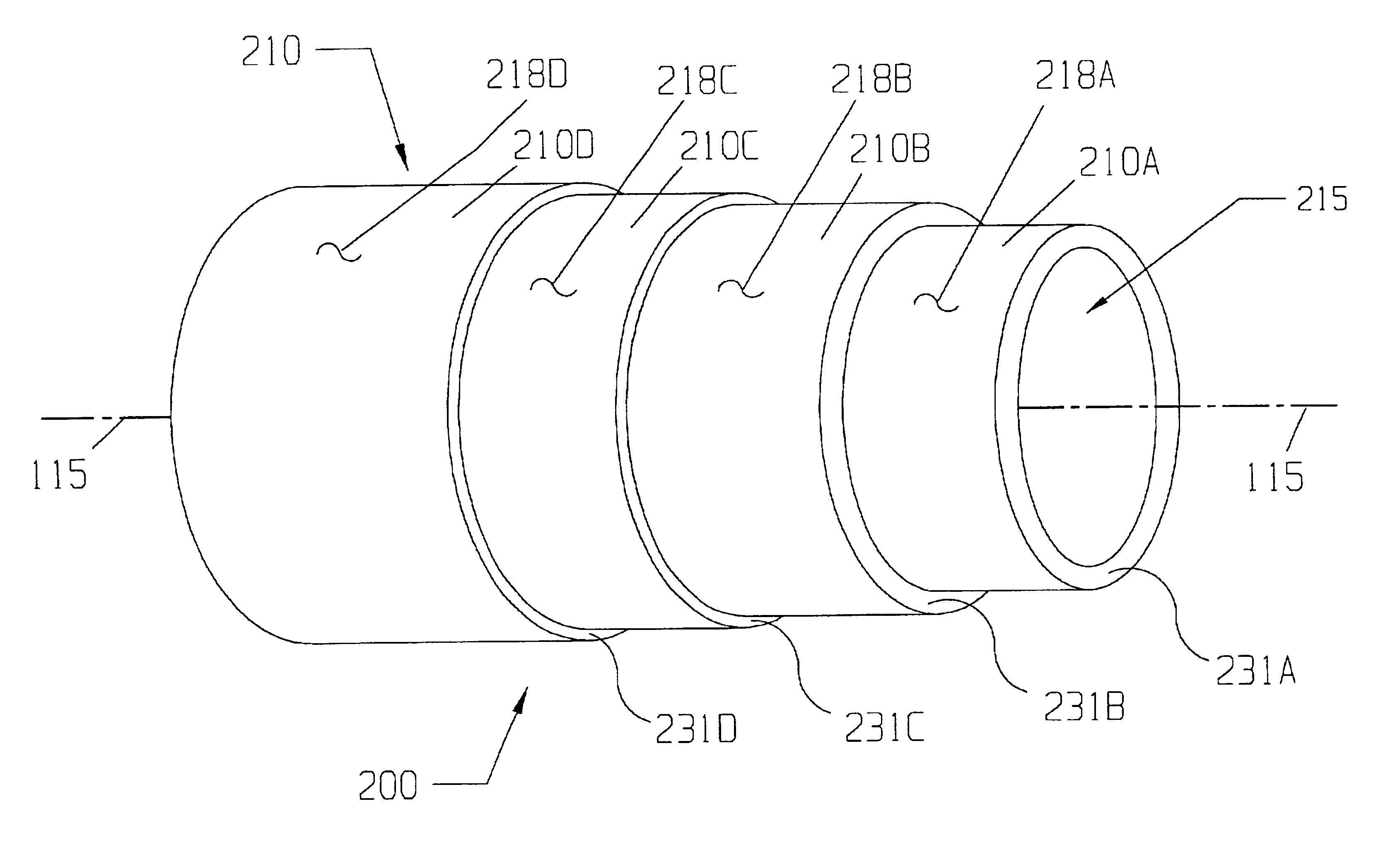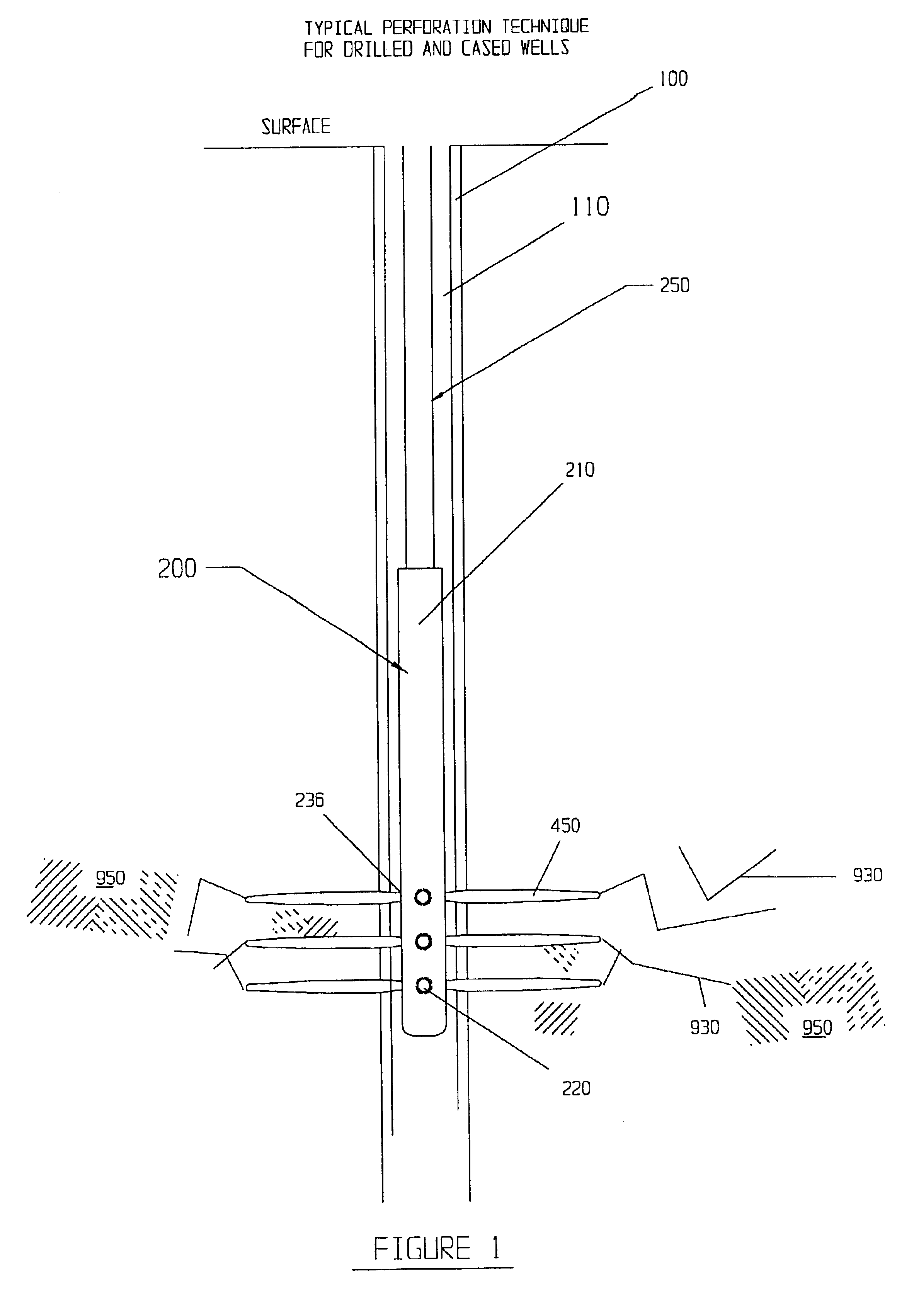Well perforating gun
a perforating gun and well technology, applied in the field of well perforating guns, can solve the problems of impact fractures, well exacerbated fracture problems, and the dynamic nature of the perforation process, so as to minimize the problem of gun wall failure, increase the strength and wall thickness of the gun, and minimize the effect of gun wall failur
- Summary
- Abstract
- Description
- Claims
- Application Information
AI Technical Summary
Benefits of technology
Problems solved by technology
Method used
Image
Examples
Embodiment Construction
The invention disclosed herein incorporates novel engineering criteria into the design and fabrication of well perforating guns. This criterion addresses multiple requirements. First, the gun material's (steel or other metal) ability to withstand high shocks delivered over very short periods of time (“impact strength”) created by the simultaneous detonation of multiple explosive charges (“explosive energy pulse” or “pulse”) is more important than the material's ultimate strength. This impact strength is measurable and is normally associated with steels with 200 low carbon content and / or higher levels of other alloying elements such as chromium and nickel. Second the shock of the explosion transfers its energy immediately to the outside surface of the tubing. Any imperfections, including scallops, will act as stress risers and can initiate cracking and failure.
FIG. 1 illustrates the basic casing perforation operation in which the tool and fabrication method disclosed in this specific...
PUM
 Login to View More
Login to View More Abstract
Description
Claims
Application Information
 Login to View More
Login to View More - R&D
- Intellectual Property
- Life Sciences
- Materials
- Tech Scout
- Unparalleled Data Quality
- Higher Quality Content
- 60% Fewer Hallucinations
Browse by: Latest US Patents, China's latest patents, Technical Efficacy Thesaurus, Application Domain, Technology Topic, Popular Technical Reports.
© 2025 PatSnap. All rights reserved.Legal|Privacy policy|Modern Slavery Act Transparency Statement|Sitemap|About US| Contact US: help@patsnap.com



